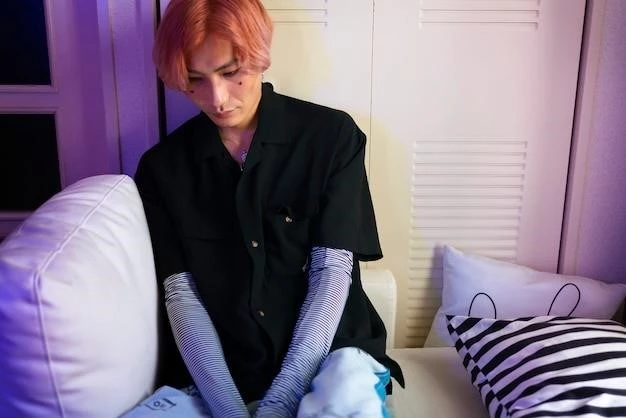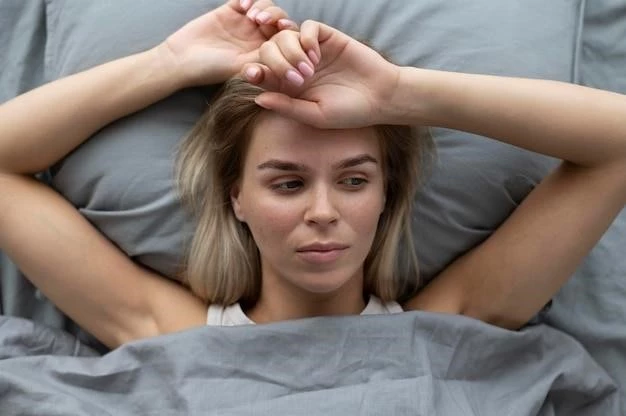Disease ౼ Heliophobia
Understanding Heliophobia
Heliophobia, an irrational and excessive fear of sunlight or natural light, is classified as a specific phobia. Individuals with heliophobia experience intense anxiety when exposed to sunlight, leading to avoidance behaviors that can disrupt daily life.
For those with heliophobia, the fear of sunlight goes beyond a typical aversion and can result in severe distress. This phobia is often misunderstood by others who may not grasp the debilitating impact it can have on an individual’s life.
Understanding heliophobia involves recognizing that the fear is excessive and unreasonable, considering the minimal threat posed by sunlight under normal circumstances. Despite this, individuals with heliophobia cannot easily control their reaction to sunlight exposure.
It is important to differentiate heliophobia from a reasonable concern about sun damage. Heliophobia is characterized by an exaggerated and uncontrollable fear of sunlight that is disproportionate to the actual danger posed by natural light.
People with heliophobia may go to great lengths to avoid sunlight, such as staying indoors during daylight hours, using heavy curtains to block out natural light, or wearing protective clothing even in mild sunlight conditions. This avoidance behavior can lead to social isolation and negatively impact the individual’s quality of life.
Symptoms of Heliophobia
The symptoms of heliophobia can manifest in various ways, impacting both the individual’s physical and mental well-being. When exposed to sunlight, individuals with heliophobia may experience immediate and intense anxiety, often accompanied by physical symptoms such as sweating, rapid heartbeat, trembling, and shortness of breath.
Psychologically, heliophobia can lead to persistent and excessive worry about encountering sunlight, fear of losing control or panicking in sunlight, and a strong desire to avoid situations where sunlight exposure is likely. Additionally, individuals with heliophobia may exhibit signs of distress or panic when faced with the prospect of going outside during the day.
Other symptoms of heliophobia include irritability, difficulty concentrating, sleep disturbances, and feelings of isolation due to avoiding outdoor activities or social gatherings that involve sunlight. The fear and anxiety associated with heliophobia can be overwhelming, leading to a significant decrease in the individual’s overall quality of life.
It is essential to recognize these symptoms early on and seek appropriate help and support to address heliophobia effectively. Left untreated, heliophobia can worsen over time and contribute to the development of additional mental health challenges, such as depression or other anxiety disorders.
Understanding the signs and symptoms of heliophobia is crucial in initiating the proper treatment and therapy that can help individuals overcome their fear of sunlight and improve their mental well-being.
Causes of Heliophobia
The causes of heliophobia, like many specific phobias, can be multifaceted and complex. One common cause is a traumatic or negative experience associated with sunlight, such as severe sunburn, heatstroke, or a related fear-inducing incident during childhood or adulthood.
Genetics and family history may also play a role in the development of heliophobia, as individuals with a family member who struggles with anxiety disorders or phobias may have a higher predisposition to developing similar conditions, including heliophobia.
Biological factors, such as an overactive amygdala (the brain’s fear center) or imbalances in neurotransmitters like serotonin and dopamine, can contribute to the manifestation of heliophobia. These neurobiological factors can heighten the individual’s response to sunlight exposure, triggering intense fear and anxiety.
Psychological factors, including underlying anxiety disorders, past traumas, or general sensitivity to environmental stimuli, can also contribute to the development of heliophobia. Individuals who are prone to excessive worry or have a heightened fear response may be more susceptible to developing heliophobia;
Social and environmental influences, such as cultural beliefs about sunlight, societal pressures to maintain a certain appearance, or previous negative experiences in sunny environments, can further exacerbate heliophobia. These external factors can reinforce the individual’s fear of sunlight and contribute to the maintenance of the phobia over time.
Impact of Heliophobia on Mental Health
Heliophobia can have a profound impact on an individual’s mental health, leading to significant distress and impairment in various areas of life. The fear of sunlight can result in heightened anxiety levels, persistent fear and worry, and avoidance behaviors that can isolate the individual from normal daily activities.
Individuals with heliophobia may experience increased levels of stress, which can contribute to the development or exacerbation of other mental health conditions, such as generalized anxiety disorder or depression. The constant fear of sunlight exposure can be mentally exhausting and may lead to feelings of helplessness or hopelessness.
Moreover, the social implications of heliophobia can further impact mental health, as individuals may withdraw from social interactions, outdoor activities, or work-related responsibilities to avoid sunlight. This social isolation can lead to feelings of loneliness, low self-esteem, and a sense of disconnection from others.
The persistent nature of heliophobia can also interfere with the individual’s ability to enjoy life fully, engage in hobbies, or maintain relationships, contributing to a reduced quality of life. Over time, untreated heliophobia can lead to a cycle of escalating fear and avoidance that perpetuates the phobia and worsens mental health outcomes.
Recognizing the detrimental impact of heliophobia on mental health is crucial in seeking appropriate treatment and support to address the phobia effectively. By addressing the underlying fear of sunlight and implementing coping strategies, individuals can improve their mental well-being and enhance their overall quality of life.
Treatment and Therapy for Heliophobia
Effective treatment for heliophobia typically involves a combination of therapeutic approaches aimed at addressing the underlying fear of sunlight and reducing associated anxiety symptoms. One common form of therapy for heliophobia is cognitive-behavioral therapy (CBT), which helps individuals identify and challenge irrational thoughts and beliefs about sunlight exposure.
Exposure therapy, a specific technique within CBT, may also be utilized to gradually expose individuals to sunlight in a controlled and supportive environment, allowing them to confront their fear and learn coping mechanisms to manage anxiety responses. This gradual exposure can help desensitize individuals to sunlight and reduce their fear over time.
Another therapeutic approach for heliophobia is mindfulness-based stress reduction (MBSR), which focuses on increasing awareness of thoughts and emotions related to sunlight exposure, helping individuals develop healthy coping strategies and reduce anxiety levels. MBSR techniques can be beneficial in managing the stress and fear associated with heliophobia.
In some cases, medication may be prescribed to help manage severe anxiety symptoms associated with heliophobia. Antidepressants or anti-anxiety medications may be recommended in conjunction with therapy to alleviate symptoms and support the individual’s overall mental well-being.
Educating individuals about the nature of heliophobia and providing psychoeducation on effective coping strategies can also be an essential component of treatment. Building a strong support network and encouraging self-care practices can further enhance the individual’s ability to manage their fear of sunlight and improve their quality of life.
Coping Strategies for Heliophobia

Individuals struggling with heliophobia can benefit from implementing various coping strategies to manage their fear of sunlight and reduce associated anxiety. One effective coping strategy is relaxation techniques, such as deep breathing exercises, progressive muscle relaxation, or meditation, to help calm the mind and body when faced with sunlight exposure.
Creating a structured routine that includes exposure to natural light in small increments can help desensitize individuals to sunlight and build tolerance gradually. Setting achievable goals for increasing sunlight exposure over time can empower individuals to confront their fear and develop confidence in managing their heliophobia.
Seeking support from mental health professionals, support groups, or online communities can provide individuals with heliophobia a safe space to share their experiences, gain insights from others, and receive encouragement and guidance on coping with their fear of sunlight. Connecting with others who understand their struggles can offer valuable emotional support.
Engaging in regular physical exercise, getting an appropriate amount of sleep, and maintaining a healthy diet are essential for overall well-being and can help individuals manage stress and anxiety related to heliophobia. Taking care of physical health can positively influence mental health and strengthen the individual’s resilience in coping with their fear.
Practicing mindfulness techniques, such as focusing on the present moment and accepting thoughts and emotions without judgment, can help individuals reduce anxiety and cultivate a sense of calm when confronted with sunlight exposure. Mindfulness practices can increase self-awareness and promote emotional regulation.
It is crucial for individuals with heliophobia to be patient with themselves as they work on implementing coping strategies and seek professional guidance when needed. By incorporating a combination of relaxation techniques, gradual exposure to sunlight, social support, and self-care practices, individuals can effectively manage their heliophobia and improve their overall quality of life.
Overcoming Heliophobia and Enhancing Quality of Life
Overcoming heliophobia requires a comprehensive approach that addresses the fear of sunlight on both a psychological and behavioral level. By working closely with mental health professionals and implementing tailored treatment plans, individuals can gradually conquer their fear and enhance their quality of life.
Therapeutic interventions, such as cognitive-behavioral therapy (CBT) and exposure therapy, can equip individuals with heliophobia with the tools and skills needed to challenge negative thought patterns, confront their fear of sunlight, and gradually increase their tolerance to sunlight exposure. Consistent therapy sessions and practice are key in overcoming heliophobia.
A supportive environment is essential in the recovery process. Family, friends, and support groups can provide encouragement, understanding, and motivation for individuals struggling with heliophobia. Open communication and collaboration with loved ones can foster a sense of empowerment and create a conducive setting for healing.
Incorporating self-care practices, such as maintaining a healthy lifestyle, engaging in activities that bring joy, and prioritizing mental well-being, can play a significant role in enhancing the overall quality of life for individuals with heliophobia. Building a foundation of self-care habits can strengthen resilience and aid in managing anxiety.
Educating oneself about heliophobia, understanding personal triggers and coping mechanisms, and setting realistic goals for exposure to sunlight are important steps in the journey towards overcoming the phobia. Acknowledging progress, no matter how small, can boost confidence and motivation in working towards a brighter future.
By investing time and effort in therapy, implementing coping strategies, seeking social support, and practicing self-compassion, individuals with heliophobia can gradually overcome their fear of sunlight and reclaim their independence and joy in life. Successfully managing heliophobia can lead to a sense of empowerment, increased confidence, and an improved overall quality of life.
